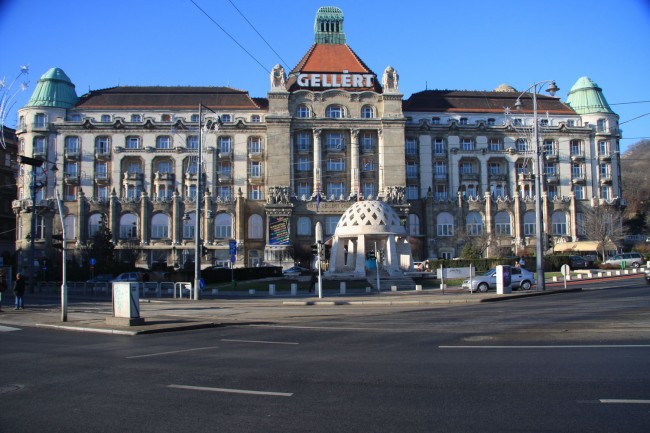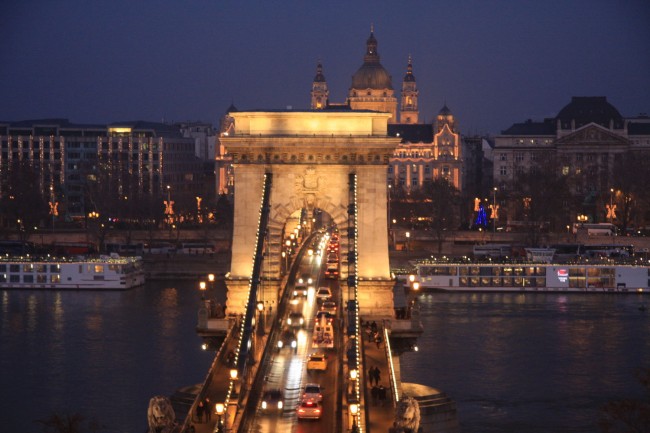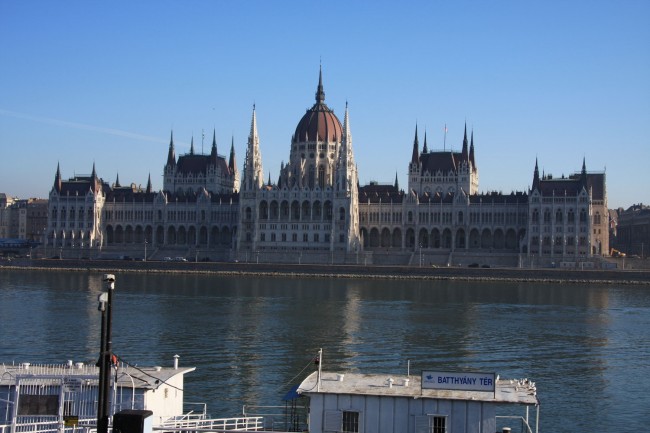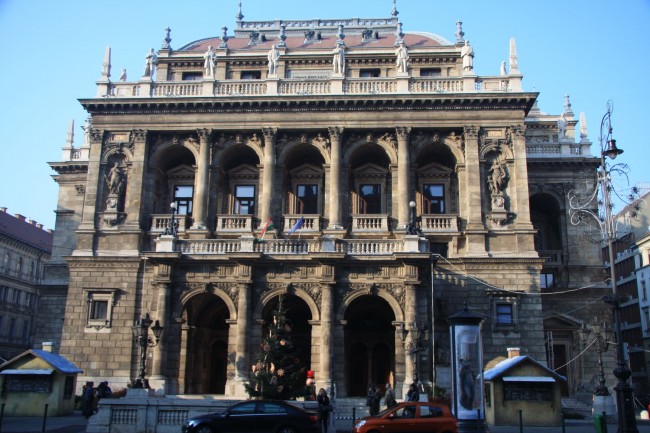I love Budapest; it’s drawn me back for a third visit, this time with my wife and son. While it’s one of the great cities of central Europe there is something different about it, possibly the Hungarian language that isn’t related to any of Europe’s three main language groups, Germanic, Latin or Slavic which has resulted in culture that sets it apart. And the powerful visual backdrops of Gellert Hill and Castle Hill anchor the city in my memory.
We stayed at the Gellert Hotel and our room had a great view of the Danube River. Built in 1918 the Gellert is a bit tired but that said it is a magnificent example of art nouveau architecture. Built over thermal hot springs the building is huge with a large indoor swimming pool, thermal pools, sauna, and steam baths. With its vaulted ceilings and stained glass windows you get the feeling that you’re in a cathedral while soaking in the naturally heated mineral waters. Outside the Gellert has an outdoor wave pool and sun terrace.
Public transit to the Gellert Hotel is a breeze with trams from several lines and a newly built subway station in front of the hotel. (Budapest has the oldest electrified subway system on Continental Europe and the second oldest in the world after London). At the foot of Gellert Hill there are well maintained pathways throughout the wooded parkland that runs along the side of the hill to its crown. Along the way there are viewing points with spectacular vistas of Pest. (Historically Budapest consisted of two separate communities, actually three. Buda on the east bank of the Danube River is hilly while Pest on the west side is flat.)
Approaching the crest of Gellert Hill from its southern slope the Liberty Monument comes into view, initially just the top of the huge statue’s palm leaf is seen through openings in the canopy of surrounding trees. At 14 metres high the female figure of Liberty Monument is perched above the city and it has come to symbolize Budapest and Hungary’s struggle for freedom.
A stone’s throw away from the Liberty Monument is the Citadella. Built by the Austrians following the Hungarian revolt of 1848 – 1849 when Hungary almost separated from the Austrian Empire (it became the Austro-Hungarian Empire in 1867), this small fortress has a commanding view of Budapest, especially of Buda’s historic Castle Hill.
Castle Hill is a mixture of medieval to neo-Gothic architecture. It has a commanding view of Pest, the Hungarian Parliament building and Szechenyi Chain Bridge. This place is a melange of Hungarian and Austrian culture such as the Roman Catholic churches of Mary Magdalene Tower, home to a former Hungarian congregation, while Matthias Church housed German speaking worshipers. Along Castle Hill’s streets walked some of the world’s great musical composers such as Franz Liszt and Bela Bartok. And who knew that the world’s first telephone switchboard was set up here in 1881 and is still in operating condition today.
Crossing the Danube we hike over to the Hungarian Parliament building. Completed in 1902 it is both the largest building in Hungry and the tallest structure in Budapest. Its location directly across the Danube River facing the Royal Palace on Castle Hill symbolically signified the will of the people against the Habsburg monarchy. Made of porous stone the building is under a certain amount of restoration at any time. The exterior has recently been cleaned and what I always thought was a white exterior under the urban grim is actually a beautiful pinkish-white stone.
Leaving Parliament make your way to Pest’s main boulevard Andrassy ut (Avenue), its 2. 5 kilometre layout was inspired by the Champ-Elysees and is lined by neo-renaissance buildings. In 2002 Andrassy ut was designated a UNESCO World Heritage Site. One of the many fine buildings gracing Andrassy ut is the 1884 Hungarian State Opera House, a magnificent example of neo-renaissance architecture. This past March while staying at the Hotel Orly in Santiago, Chile we spotted a framed 1890s lithograph of Budapest’s famed opera house on the wall.
Andrassy ut ends at the City Park and its famous Heroes Square. Construction of Heroes Square began in 1896 to mark the millennium of Hungary’s founding. The statues at Heroes Square depict Hungarian figures that played crucial roles in Hungary over the past 1,100 years. Framing Heroes Square on the left is the Museum of Fine Art (non-Hungarian historical art) and to the right is the Hall of Art (modern art). The City Park has several additional attractions ranging from a castle, amusement park, skating rink, year-round out door thermal spring spa and other venues. You could spend a couple of days at the park taking it all in.
All of this just scratches Budapest’s rich history and with the collapse of communism 25 years ago in Hungary, Budapest, especially the Pest side, has developed a vibrant restaurant, bar and artistic scene which I’ll leave for another article.
Photo Credits
All photos by Joseph Frey – All Rights Reserved






Please Share Your Thoughts - Leave A Comment!